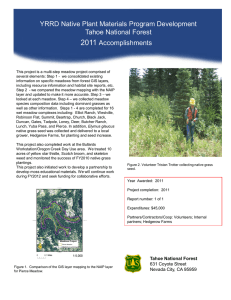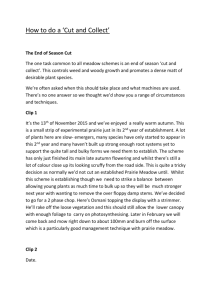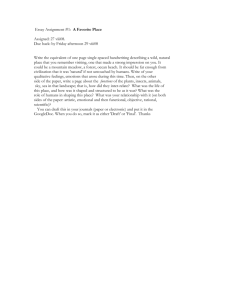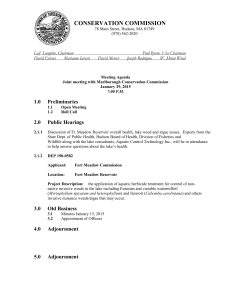Document 12958944
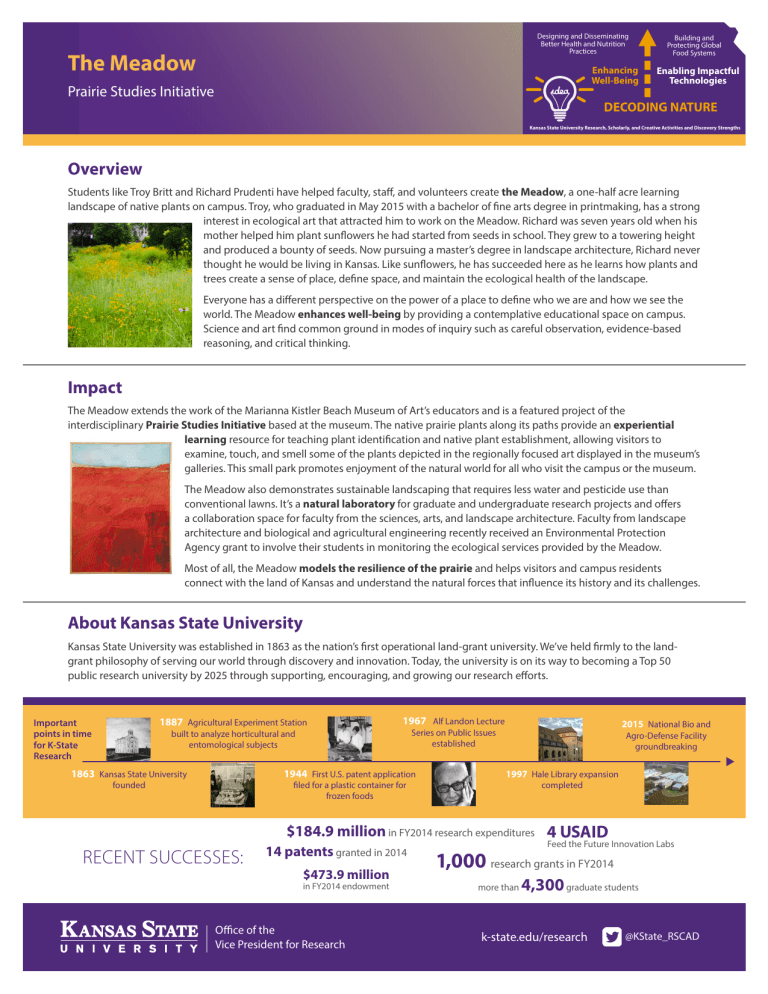
The Meadow
Prairie Studies Initiative
Designing and Disseminating
Better Health and Nutrition
Practices
Enhancing
Well-Being
Building and
Protecting Global
Food Systems
Enabling Impactful
Technologies
DECODING NATURE
Kansas State University Research, Scholarly, and Creative Activities and Discovery Strengths
Overview
Students like Troy Britt and Richard Prudenti have helped faculty, staff, and volunteers create the Meadow, a one-half acre learning landscape of native plants on campus. Troy, who graduated in May 2015 with a bachelor of fine arts degree in printmaking, has a strong interest in ecological art that attracted him to work on the Meadow. Richard was seven years old when his mother helped him plant sunflowers he had started from seeds in school. They grew to a towering height and produced a bounty of seeds. Now pursuing a master’s degree in landscape architecture, Richard never thought he would be living in Kansas. Like sunflowers, he has succeeded here as he learns how plants and trees create a sense of place, define space, and maintain the ecological health of the landscape.
Everyone has a different perspective on the power of a place to define who we are and how we see the world. The Meadow enhances well-being by providing a contemplative educational space on campus.
Science and art find common ground in modes of inquiry such as careful observation, evidence-based reasoning, and critical thinking.
Impact
The Meadow extends the work of the Marianna Kistler Beach Museum of Art’s educators and is a featured project of the interdisciplinary Prairie Studies Initiative based at the museum. The native prairie plants along its paths provide an experiential
learning resource for teaching plant identification and native plant establishment, allowing visitors to examine, touch, and smell some of the plants depicted in the regionally focused art displayed in the museum’s galleries. This small park promotes enjoyment of the natural world for all who visit the campus or the museum.
The Meadow also demonstrates sustainable landscaping that requires less water and pesticide use than conventional lawns. It’s a natural laboratory for graduate and undergraduate research projects and offers a collaboration space for faculty from the sciences, arts, and landscape architecture. Faculty from landscape architecture and biological and agricultural engineering recently received an Environmental Protection
Agency grant to involve their students in monitoring the ecological services provided by the Meadow.
Most of all, the Meadow models the resilience of the prairie and helps visitors and campus residents connect with the land of Kansas and understand the natural forces that influence its history and its challenges.
About Kansas State University
Kansas State University was established in 1863 as the nation’s first operational land-grant university. We’ve held firmly to the landgrant philosophy of serving our world through discovery and innovation. Today, the university is on its way to becoming a Top 50 public research university by 2025 through supporting, encouraging, and growing our research efforts.
Important points in time for K-State
Research
1887 built to analyze horticultural and entomological subjects
1863 Kansas State University founded
Agricultural Experiment Station
1944
1967
First U.S. patent application filed for a plastic container for frozen foods
Alf Landon Lecture
Series on Public Issues established
1997 Hale Library expansion completed
2015 National Bio and
Agro-Defense Facility groundbreaking
RECENT SUCCESSES:
$184.9 million
in FY2014 research expenditures
14 patents
granted in 2014
4 USAID
Feed the Future Innovation Labs
1,000 research grants in FY2014
$473.9 million in FY2014 endowment more than
4,300
graduate students
Office of the
Vice President for Research
k-state.edu/research
@KState_RSCAD


